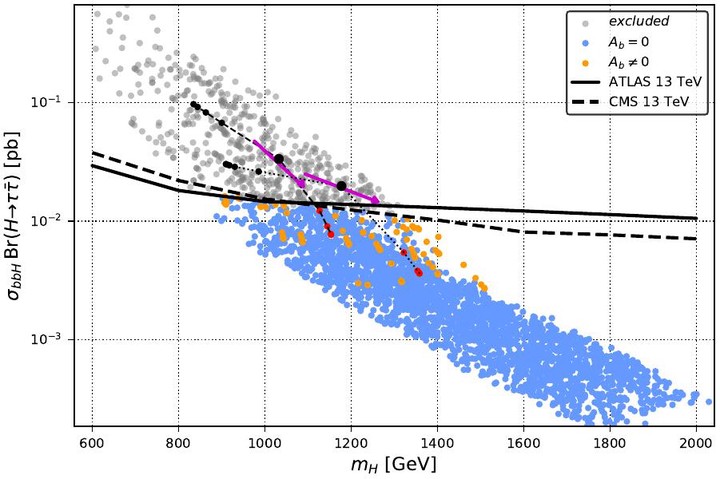Supersymmetry Phenomenology
 Supersymmetry phenomenology
Supersymmetry phenomenology
The discovery of the Higgs boson at the Large Hadron Collider (LHC) provides compelling evidence that the Higgs mechanism is responsible for the generation of elementary particle masses in the Standard Model (SM). An important next question is to ascertain the nature of this new particle by measuring its properties and couplings.
A well-motivated possibility is to identify the new resonance with the lightest Higgs boson in the supersymmetric standard model. Supersymmetry (SUSY) provides a natural solution to the hierarchy problem while simultaneously allowing for gauge coupling unification and a suitable dark matter candidate. I am interested in supersymmetry phenomenology and have considered dark matter explanations of the GeV excess of photons observed by the Fermi satellite and different aspects of fine tuning/naturalness.
A Higgs boson at 125 GeV is in extreme tension with maintaining naturalness in the Minimal Supersymmetric Standard Model (MSSM). As is well-known, large radiative corrections from stop loops are required to enhance the Higgs quartic coupling which originates at tree-level from D-terms. This is accomplished by either having large O(1 TeV) stop masses, in the case of negligible mixing in the stop sector, or a large trilinear At-term. In either case, a fine-tuned cancellation caused by this little hierarchy is needed to obtain the correct electroweak symmetry breaking scale. This motivates the introduction of an additional singlet which provides an additional tree-level contribution to the Higgs boson mass and thus the discussion of the next-to-minimal supersymmetric standard model (NMSSM).